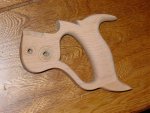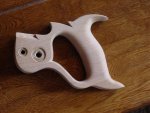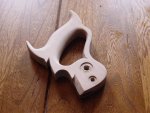Tom,
I'd like to offer some advice, and please take it as advice, not criticism.
Please buy a couple files and take a stab at sharpening your saw. It's something that needs to be done on a continual basis, just as sharpening chisels or hand planes, or any edge tool for that matter...but saws are certainly specialized and I've not really met anyone who has felt comfortable with it when they started.
Being able to add a bit of set when needed is also good to know how to do, but for a lot of joinery work that is done with backsaws, set is less important and often no set at all is preferred, it all depends on the thickness of the plate, tooth pattern, and size. As the plate and length get larger, I prefer more/some set.
It's pretty simple to create a saw vise, if you don't have one, or get one on ebay. Get the Somax saw set from Tools for Working Wood, Joel's got both sizes typically. Joel probably has files also, they're like $5/each.
Anyway, my advice not only to you, but others is if you use western style handsaws, learn how to sharpen them. You will not regret it for one moment. In fact, you will want to sharpen your saw before you use it in many cases, just as you would a chisel or hand plane. A sharp saw is a tool to appreciate, and being able to make your saw that way when you use it is gratifying. I can't imagine having to send out to get a saw sharpened, they don't stay sharp forever, not if you use them to cut wood.

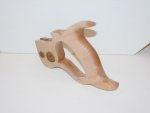
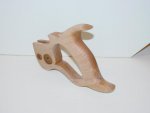
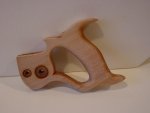








 I am going to do more detail work to the handle before I get the blade back from sharpening.
I am going to do more detail work to the handle before I get the blade back from sharpening.